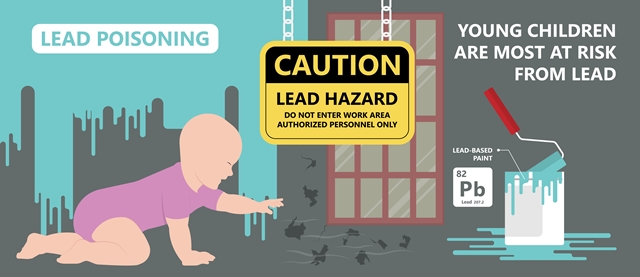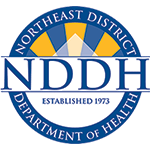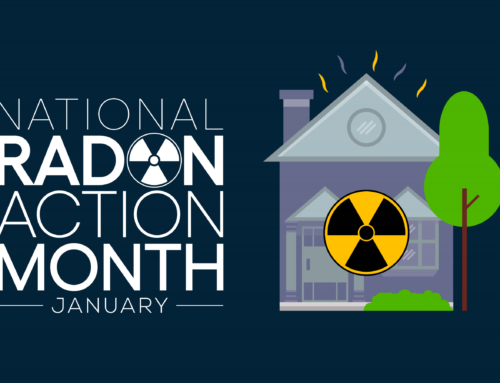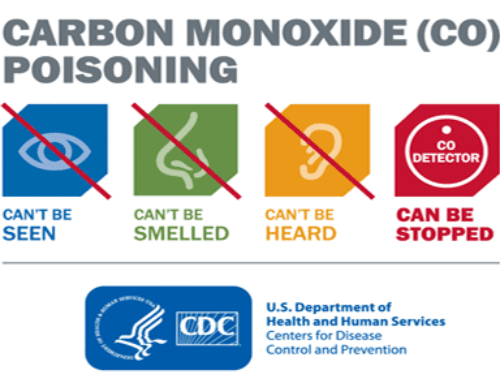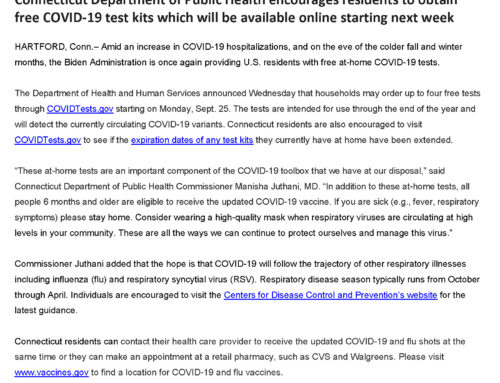Health Department is Working with Response Partners and Tenants to Identify Sources of Lead
(BROOKLYN) – The Northeast District Department of Health (NDDH), working cooperatively with the Connecticut Department of Public Health (DPH), is actively responding to lead hazards identified at the Lofts at Cargill Falls Mill housing complex, 58 Pomfret Street in Putnam.
Lead poisoning prevention is an important public health issue and NDDH routinely addresses lead concerns by conducting inspections and then working with property owners to make sure that lead hazards are identified and corrected. Exposure to even small amounts of lead can harm children and those under the age of six are most vulnerable to lead poisoning.
NDDH conducted an inspection of a unit in the Cargill Falls Mill complex and detected lead in a brick wall, baseboard, closet door, and a wood floor filler. To comply with Connecticut General Statutes 19a-111 and its accompanying regulations, NDDH worked to identify other units housing children under the age of six to schedule inspections. All tenants were notified by a letter dated December 21, 2023 to contact NDDH at 860-774-7350 with their concerns and to arrange inspections.
“We are committed to working with other response partners to protect the health and well-being of the tenants of The Lofts at Cargill Falls Mill,” said Sue Starkey, NDDH Director of Health. “The role of NDDH in this response is to conduct investigations to identify lead hazards; write orders to the property owner to remedy the problem; and approve and monitor the plan for correction that is submitted to us.”
NDDH also provides health education and is working with the town of Putnam to coordinate a lead poisoning prevention presentation to the tenants of The Lofts housing complex and the community at large.
“We know that recent news about toxic lead levels found at the Lofts at Cargill Falls Mill has caused concern and we remain committed to keeping all those impacted informed and educated,” commented Linda Colangelo, NDDH Education and Communications Coordinator. “Lead can be present in mansions and mills, and in buildings and homes built before 1978. We want people to understand the causes and dangers of lead exposure and the steps they can take to reduce their risk. It’s important to note that most children exposed to lead do not appear to be sick, so a blood lead test is the best way to know if your child has had an exposure.”
Connecticut law requires every child between the ages of 9 months and 35 months to be tested for lead poisoning each year. Most medical providers will test children at ages 12 months and 24 months. Testing is also recommended for children between 25-72 months if the child has not been previously tested. Parents should talk to their child’s healthcare provider about getting a blood lead test.
New Connecticut regulations that lowered the required reporting of blood lead levels to 3.5 milligrams per deciliter went into effect on January 1, 2023.
Additional resources include websites for The CT DPH Lead Poisoning Prevention and Control Program, NDDH, and the Centers for Disease Control and Prevention Childhood Lead Poisoning Prevention Program
###
